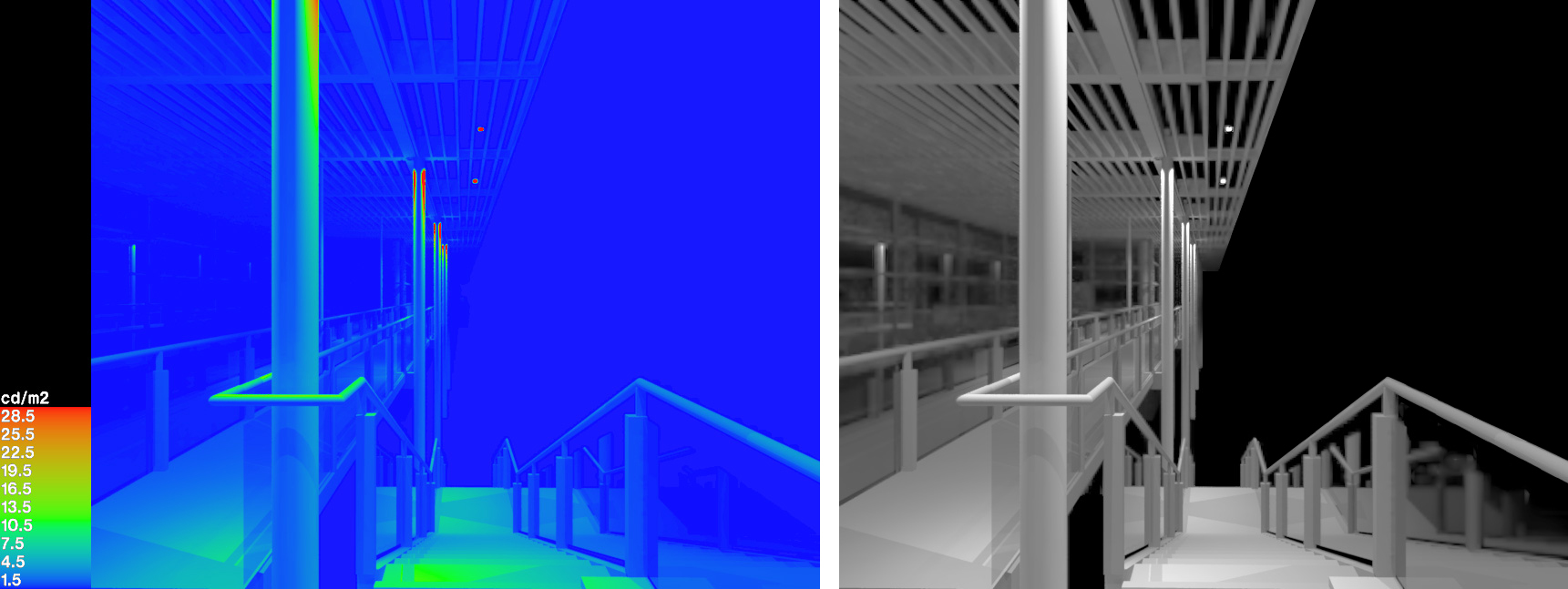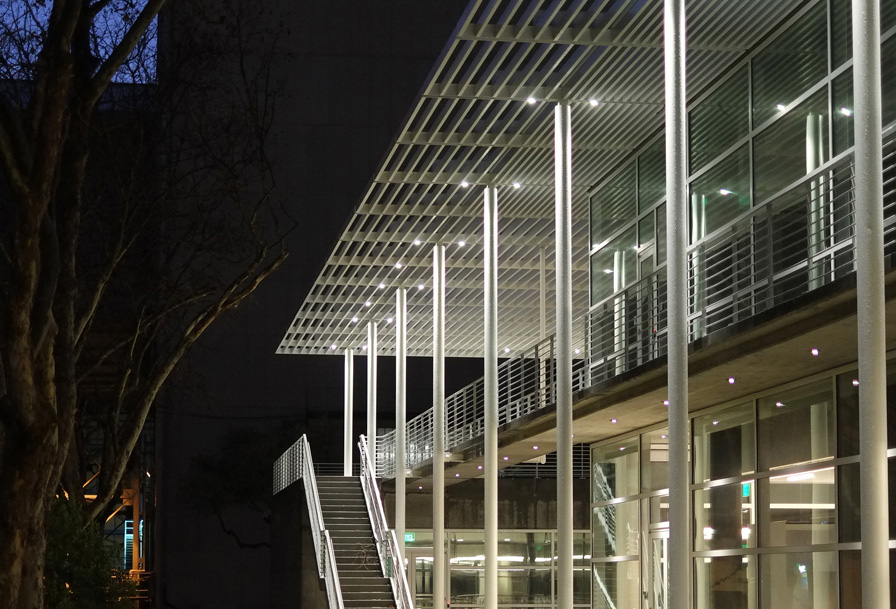EXPERTISE
NASA Biosciences Building
The NASA Biosciences Building is used to study the impacts of spending long periods of time in space on the human body. Research seeks to understand how low or no gravity can decrease bone density and how space radiation impacts the body and its cells. Scientists study what extreme conditions a microorganism can survive in, the best techniques astronauts and researches can use to find evidence of life on other planets.
SERVICES
A louvered shade canopy and catwalk function as a unifying element, creating a powerful presence along Durand Road.
The form and design of the building, with an iconic shade canopy and open lab layout, actively engages its context.
The lab spaces are well daylit. Electric lighting supplements daylight and provides a functional, and visually comfortable luminous environment after dark. High illumination levels required on the lab bench worksurfaces are delivered from a combination of asymmetrical pendants above the front edges of the worksurfaces and undershelf task lighting. The ceiling above the lab benches are washed from a concealed cove, promoting visual comfort by reducing contrast ratios in the visual field. The worksurfaces along lab corridors are illuminated by asymmetric ceiling recessed fixtures and undershelf task lights, with spill sufficient for the circulation route.
Light fixtures are well integrated into the shade structure, nearly unnoticeable in the day.
At night, the hidden fixtures accentuate the architecture.
Top: Simulation results for lab showing luminance (surface brightness) in cd/m2, as a falsecolor map (image on left), and illuminance (amount of light falling on surfaces) shown in footcandles, as iso-contour lines (image on right).
Bottom: Photograph of completed lab space.
Top: Simulations of exterior lighting to ensure desired aesthetic effect and appropriate illumination levels on the stair.
Bottom: Photo of completed project.
AWARDS
USGBC LEED Gold Certified, 2020
Project Details
LOCATION: Moffett Field, CA
ARCHITECT: AECOM
Client: NASA Ames Research Center
Status: Occupied, 2020
Area: 40,300 sf









